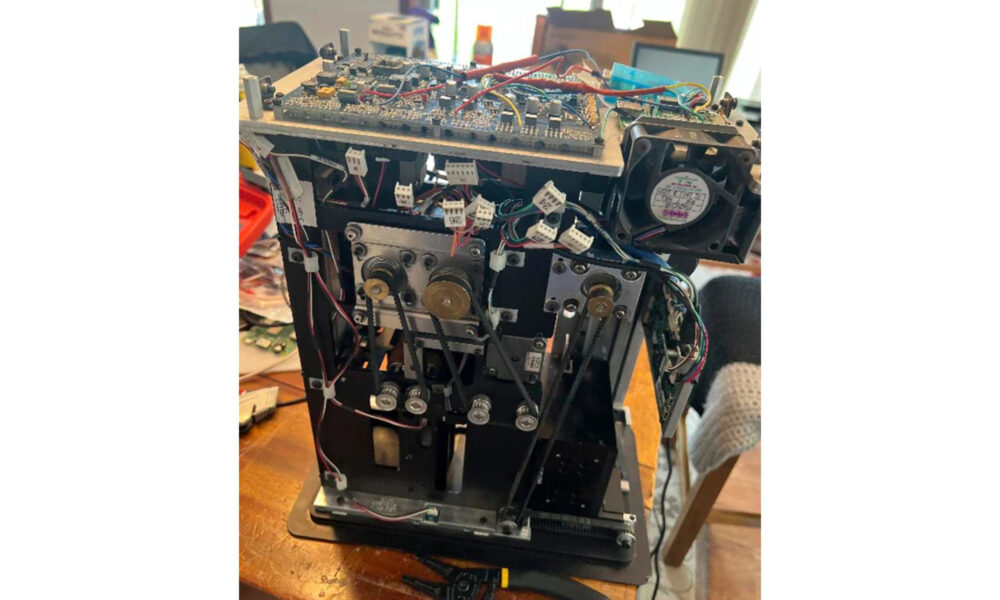The indictments announced Thursday of a poker cheating ring involving NBA figures and backed by the mafia emphasized their alleged high-tech cheating methods. But the con tactics they described are as old as poker itself, familiar from heist movies and James Bond films.
Shady shuffles came not from quick-handed card sharks, but tricked-out machines. Instead of mirrors or guys in the corner peeking over shoulders, there were X-ray tables and high-tech contact lenses. Low-tech signals between players and old-fashioned beatings for debtors allegedly were used too.
Here’s a look at how the alleged fraudsters rigged the games, according to an unsealed indictment and the announcement from federal officials.
The poker
The underground games were illegal by their very existence, and operated by mafia families. So the indictments go out of their way to emphasize that these were extra illegal — as opposed to “straight” illegal games where at least the poker itself is legit. Texas Hold ’em was the poker they played, like most games these days. It involves very few cards — just five face-down public cards and two for each player. That potentially simplifies the scamming.
The victims and the ‘face cards’
Rich targets known as “fish” were brought in by the allure of playing for high stakes in posh secret spots in Manhattan with names like “The Lexington Avenue Game,” the indictment said. They were also attracted by the prospect of playing with pro athletes and coaches, including Portland Trail Blazers coach and Hall-of-Fame NBA player Chauncey Billups. The operators called these “face cards.”
Billups was charged with participating in a conspiracy to fix high-stakes card games tied to La Cosa Nostra organized crime families that cheated unsuspecting gamblers out of at least $7 million. Also charged was former NBA assistant coach and player Damon Jones.
Authorities gave no hints about the identity of the victims other than to say they were usually wealthy people who lost tens and sometimes hundreds of thousands of dollars to the cheaters.
The “face cards” and everyone else at the table who was not a target was in on the scam.
The cheating tactics
The shuffling machine did most of the work. Using machines is common, but the advanced tech on these ones could determine the exact order of cards after a shuffle, and who was holding what once they were dealt. That information was transmitted wirelessly to someone off-site, who would send the identity of the player with the winning hand to the phone of a player at the table, known as “the quarterback.”
Then it got low-tech. The “quarterback” would use classic subtle signals like touching certain chips to pass the information to the fellow cheaters. They’d all bet accordingly.
The other cheating methods
The shuffling machine con was apparently the main tactic, but the conspirators supposedly tried other gadgetry, some of it similar to the tech used to identify players’ hands on poker telecasts. Authorities didn’t go into detail about them, but they included:
-An X-ray table that could identify the face-down cards used in Texas Hold ‘em from underneath.
-Hidden cameras built into the trays that hold players’ chips that could identify cards.
-Customized contact lenses and glasses that could detect special marks on cards.
The postgame
The cheating winners would share a percentage of their take with the game operators. The victims were often told to wire money to shell companies that laundered it. And the organizers sometimes used robbery, extortion and assault to get debtors to pay. Authorities said two game operators used their fists to extract payment from one cheated player.
Also charged was former NBA assistant coach and player Damon Jones, who stands accused of participating in a separate scheme of exploiting private information about players to win bets on NBA games.
Billups made his first court appearance Thursday before a judge in Portland, Oregon. His attorney, Chris Heywood, declined to comment after the hearing.
A message was left at a phone number and email address listed in public records for Jones.




